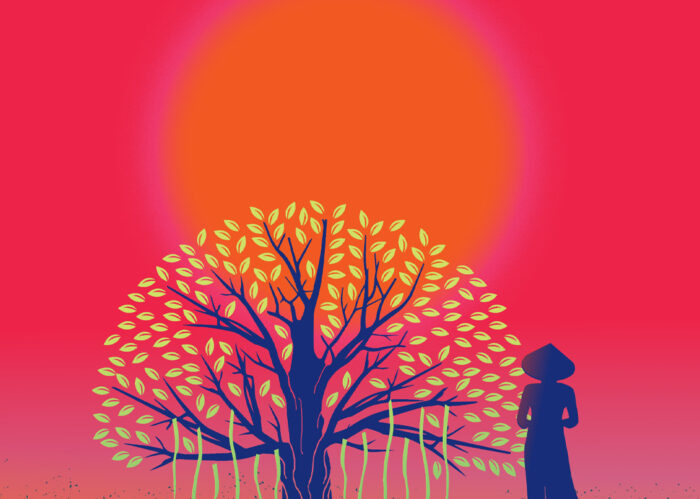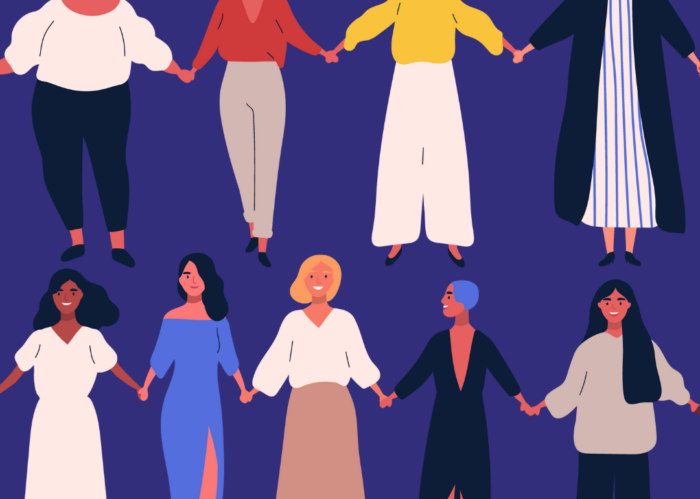People, People Who Need Trees, are the Lucky 7-est People in the World
 If you’re lucky enough to be near a window right now, go look out it. (If you’re lucky enough to be outside as you’re reading this, then just look around you — and also know we’re really jealous of you.) What do you see? Do see leaves, green and glorious and everywhere? Leaves on trees with branches with birds. Birds flitting and singing, soaring and fluttering. (Come on, raise your hand — who watched the HBO documentary about birding on Monday night?)
If you’re lucky enough to be near a window right now, go look out it. (If you’re lucky enough to be outside as you’re reading this, then just look around you — and also know we’re really jealous of you.) What do you see? Do see leaves, green and glorious and everywhere? Leaves on trees with branches with birds. Birds flitting and singing, soaring and fluttering. (Come on, raise your hand — who watched the HBO documentary about birding on Monday night?)
This time of year, the trees and birds seem to be in wonderful abundance. And aren’t we lucky? Lucky 7, that is. We’re celebrating The Great Outdoors all month-long with our $1.99 Lucky 7 e-books. Today, we’re featuring the trees and the birds of Diana Wells.
“We need the trees and they need us.”
Diana Wells investigates the names and meanings of trees in Lives of the Trees. By telling their legends and lore, she reminds us of just how innately bound we are to these protectors of our planet. Since the human race began, we have depended on them for food, shade, shelter and fuel, not to mention furniture, musical instruments, medicine utensils and more.
 Some fascinating tidbits from Lives of the Trees:
Some fascinating tidbits from Lives of the Trees:
- At one time, a worm found in a hazelnut prognosticated ill fortune.
- Rowan trees were planted in churchyards to prevent the dead from rising from their graves.
- Greek arrows were soaked in deadly yew, and Shakespeare’s witches in Macbeth used “Gall of goat and slips of Yew” to make their lethal brew.
- One bristlecone pine, at about 4,700 years old, is thought to be the oldest living plant on earth.
“[Trees] are so much part of our lives, both in ways we know and ways we don’t know,” Wells told NPR’s Michelle Norris. “Whether it be a cup of coffee or a Kleenex or your rubber tires on your automobile, they are very much bound in our life, and these days, of course, we know that they’re essential to our planet.”
You can buy Lives of the Trees e-book for $1.99 at your neighborhood INDIEBOUND independent bookstore, GOOGLE, AMAZON, BARNES & NOBLE, APPLE and KOBO.
And then there are the birds, 100 of them, in fact. In 100 Birds and How They Got Their Names, Wells hatches a treat for active birders and armchair enthusiasts alike. Meet the intrepid adventurers and naturalists who risked their lives to describe and name new birds.
 Learn the mythical stories of the gods and goddess associated with bird names and all the literary links from Coleridge’s albatross in “The Ancient Mariner” to Poe’s raven. To quote the 100 Birds and How They Got Their Names: “Ever since the Song of Songs for Solomon’s beloved, dark-haired lovers have had ‘raven tresses.’ ”
Learn the mythical stories of the gods and goddess associated with bird names and all the literary links from Coleridge’s albatross in “The Ancient Mariner” to Poe’s raven. To quote the 100 Birds and How They Got Their Names: “Ever since the Song of Songs for Solomon’s beloved, dark-haired lovers have had ‘raven tresses.’ ”
More fascinating feathered fodder:
- Benjamin Franklin didn’t want the bald eagle on our National Seal because of its “bad moral character,” (it steals from other birds); he lobbied for the turkey instead.
- Chaffinches, whose Latin name means “unmarried,” are called “bachelor birds” because they congregate in flocks of one gender.
- Since mockingbirds mimic speech, some Native American tribes fed mockingbird hearts to their children, believing it helped them learn language.
- A group of starlings is called a murmuration because they chatter so when they roost in the thousands.
You can buy 100 Birds and How They Got Their Names e-book for $1.99 at your neighborhood INDIEBOUND independent bookstore, GOOGLE, AMAZON, BARNES & NOBLE, APPLE and KOBO.
-
Overall Score
Reader Rating: 0 Votes






Nobody is lucky if they’re outside today. In Michigan it’s over 100 degrees! We have lots of trees, and they’re all miserably hot today.